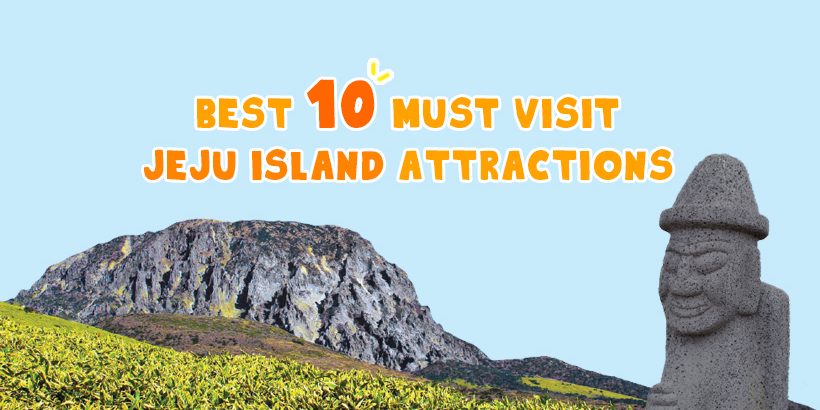1. Seongsan Ilchulbong Peak [UNESCO World Heritage]
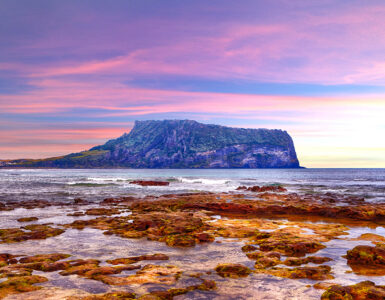
- The meaning of “Ilchul” means Sunrise in English. This is the most famous place to see the sunrise.
- Enjoy one of the most breath-taking views from the peak.
- Trail and stairs are well maintained and it is easy to trek to the top. (About 30 min) There are also many spots where you can stop and take a rest.
Located on the eastern end of Jejudo Island, it rose from under the sea in a volcanic eruption over 100,000 years ago. There is a huge crater at the top of Seongsan Ilchulbong Peak. With the 99 sharp rocks surrounding the crater, it looks like a gigantic crown. While the southeast and north sides are cliffs, the northwest side is a verdant grassy hill that is connected to the Seongsan Village. The ridge provides an ideal spot for walks and for horse riding as well.
2. Hallasan National Park [UNESCO World Heritage]
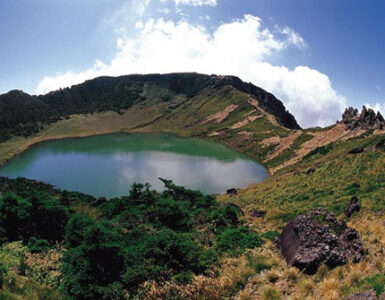
- One of the most memorable landmarks of Jeju!
- You can find Mt. Halla from all places on the island.
- The trail is well marked and well maintained, but you may feel a bit challenge if you are not used to trekking.
- Have fun trekking and eating snacks along the way with your loved ones!
Hallasan (Mt. Halla) is the highest mountain in South Korea. The mountain is widely known by scientists for its geological value. There are 368 parasitic volcanoes called Oreums (peaks) around the main mountain. Over 1,800 kinds of plants and 4,000 species of animals (3,300 species of insects) have been identified.
3. Manjanggul Cave [UNESCO World Heritage]
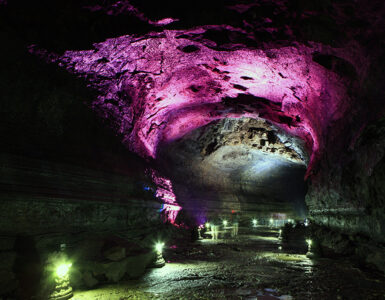
- Feel the cold temperature of 13 degree celcius in the summer!
- Recommend to bring gloves and jacket if you get cold easily.
- A unique place to visit and even if you do not have any information about the cave, there is descriptive dual language (Korean and English) for explanation.
- Enjoy watching unique patterns on the walls, ceiling and walls.
Known as one of the finest lava tunnels in the world, it is a designated natural monument. Manjanggul Cave has a variety of interesting structures inside including 70cm lava stalagmites and the lava tube tunnels.
4. Jusangjeolli Cliff
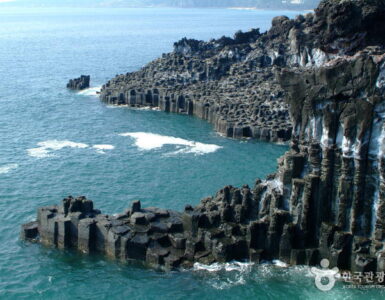
- A must visit place to see the unique cliff carvings.
- Easy walk to the cliff.
- Great place to take photos and have a relaxing time watching the beautiful and unique scenery.
The columnar joints in the Jungmun Tourism Complex were designated as Natural Monument #433 on December 27, 2004. They look like a large folding screen with black hexagon stone pillars. It is a wonder to look at the columnar joints with beautiful ocean waves crashing against them.
5. Jeongbang Falls
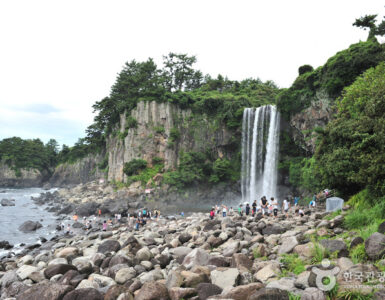
- One of top three waterfall in Jeju Island.
- A picturesque place to take photos and videos.
- Enjoy the icy cold water by diving your feet into it. (But you cannot swim)
Jeongbang Waterfall is one of three main Jeju waterfalls, along with Cheonjiyeon Waterfall and Cheonjaeyeon Waterfall. It is the only one in Korea which spills directly into the sea. Harmonized with the sea, two 23m-tall columns of water fall with a sound like thunder which makes a magnificent view.
6. Sanbangsan Mountain
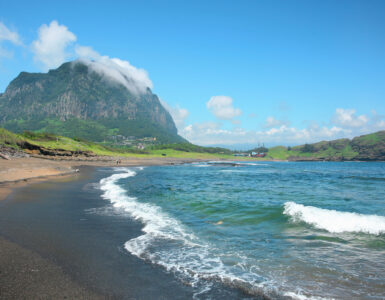
- Worth a visit to see the beautiful scenery!
- Enjoy visiting other attractions such as temples, tea shops and coffee shops.
- Very popular when the field is covered with canola flowers.
As its name ‘sanbang’ – literally meaning ‘a cave inside a mountain’ – suggests, this mountain contains a cave, which is located about 150m above sea level and has a spectacular view out over the ocean. This mountain is the only mountain that does not have a crater in Jeju. Also, the temple on Mt. Sanbang is famous for the only cave shrine in Jeju.
7. Cheonjiyeon Falls
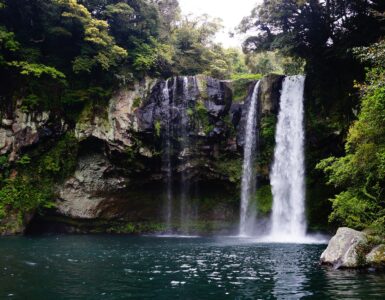
- Enjoy the night view of the waterfall.
- On the trail to the waterfall, there are wild flowers for you to enjoy. The scenery is beautiful and perfect for a stroll.
- Visit one of the three best waterfall in Jeju.
Its name ‘Cheonjiyeon’ means sky connected with land. It got its name because the water appears to fall from the heavens.
8. Yongduam Rock(Dragon Head Rock)
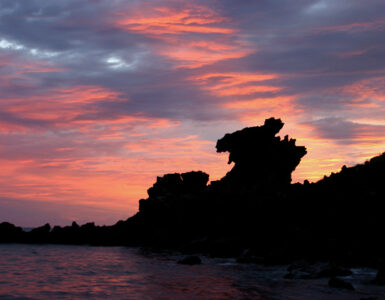
- Located nearby the airport.
- A recommended place to take photos.
- Have a relaxing time eating and watching the sunset.
Yongduam was created by strong winds and waves over thousands of years. There are many interesting legends about the rock. One legend has it that a dragon stealing precious jade from Mt. Halla was shot down by an arrow from the mountain deity. When he fell down on Yongduam, his body immediately sank into the ocean and his head rapidly froze looking at the sky. From Yongduam, you can see Haeneo women divers working on catching seafood.
9. Seopjikoji
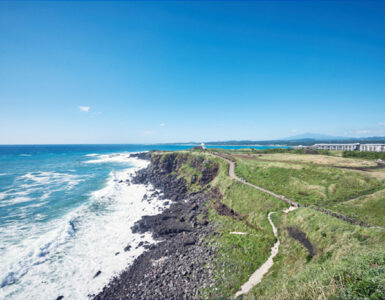
- Worth a visit to see the beautiful scenery of the sea, rocks and the sky from the lighthouse.
- Enjoy a nice, relaxing stroll.
- You can also experience horse riding with additional price.
Seopjikoji is located at the end of the eastern shore of Jeju Island and boasts a fantastic scenery especially in April when yellow canola flowers are in full bloom. “Seopji” is the old name for the area, and “Koji” is Jeju dialect meaning a sudden bump on land. Seopjikoji was the filming site of “Gingko Bed,” “The Uprising,” “One Thousand and One Nights” and other Korean TV dramas.
10. Seongeup Folk Village
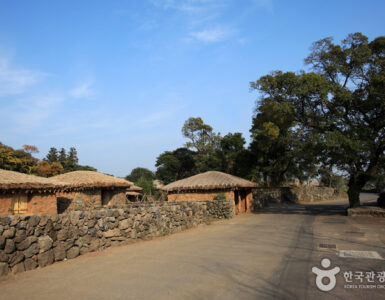
- A well preserved real folk village which the old houses have been passed down from generation to generation.
- The village is often used as a movie&drama set.
- A must go place if you are interested in the traditions and cultures of Jeju.
- About 2 hours to complete the whole village.
It is a small town that holds a vast amount of culture. Cultural properties have been handed down from generation to generation and include treasures such as residential houses, Confucian shrines and schools, ancient government offices, stone statues, large millstones (pulled by horses or ox), fortress ruins, and stone monuments.

